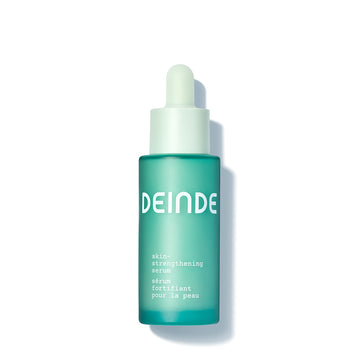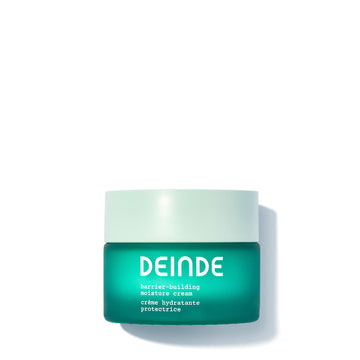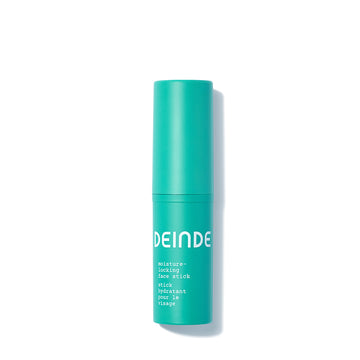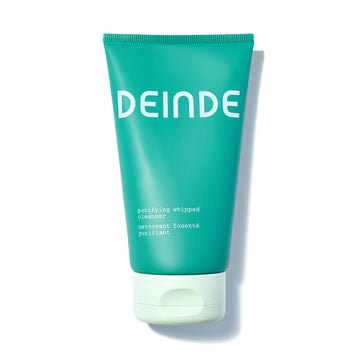
Your Guide to Skin Cycling
When it comes to relationships, there’s the age-old saying, “Familiarity breeds contempt.” In the realm of skincare, this isn’t too far off. Stay with us. We’re going to tell you why.
Oftentimes, when we find products we love, we want to use them every day because we know how they make our skin look and feel. However, in recent years, the concept of skin cycling has put this idea of over-relying on the same treatment-based skincare to shame, suggesting that we might actually be priming our skin for more irritation and reactivity.
Rather than use that one AHA exfoliating serum every day for the rest of your life, skin cycling proposes strategically rotating products in your routine to not only minimize irritation, but to also achieve healthier, more radiant skin, and enhance the benefits of your true ride-or-die skincare heroes.
We’ve gotten real specific in our latest blog to give you the 101 on skin cycling at large, how to start, and tips for creating your own personalized routine. Whether you're a skincare novice or a seasoned enthusiast, this guide will provide valuable insights into optimizing your regimen.
What is skin cycling?
Similar to your fitness regimen, recovery is just as important as the workout itself.
Skin cycling is a skincare routine that involves rotating different products to target various skin concerns while allowing your skin time to recover and adapt (our minds, bodies, and spirits require the same healing process!).
Typically over a four-day or weekly cycle, you’re meant to switch out your products that contain active ingredients (think: retinoids and exfoliants). This helps to balance treatment and recovery phases while reducing the risk of irritation and overuse.
What are some skin cycling essentials?
-
Exfoliants… help remove dead skin cells and promote cell turnover. Common chemical exfoliants include exfoliating acids, like alpha-hydroxy acids (AHAs) (glycolic, lactic, and malic acid), and beta-hydroxy acids (BHAs) like salicylic and benzoic acid.
-
Retinoids… are vitamin A derivatives that boost collagen production, improve skin texture, and reduce fine lines and wrinkles, however they can easily cause irritation and dryness if used too much.
- Hydrators and Moisturizers… support the skin's barrier function and ensure it stays hydrated, balanced, and resilient against external stressors and inflammaging.
What are the benefits of skin cycling?
-
Reduced Irritation: By not overloading the skin with potent actives daily, skin cycling helps minimize irritation and sensitivity.
-
Improved Efficacy: Allowing your skin to rest between treatments can enhance the absorption and effectiveness of active ingredients.
-
Balanced Skin Health: Alternating between treatment and recovery phases supports a balanced and resilient skin barrier.
- Personalized Approach: Skin cycling can be tailored to individual skin types and concerns, whether you have dry skin, sensitive skin, or acne-prone skin, making it a versatile method for achieving various skincare goals.
How to become a skin cycling expert.
Step 1 | Know Your Skin In and Out
The first step in creating a skin cycling routine is understanding your skin type and identifying your primary skin concerns. Skin types generally fall into the following categories:
Oily: Characterized by excess sebum production and a shiny appearance.
Dry: Lacks sufficient moisture, often feels tight and may have flaky patches.
Combination: Exhibits both oily and dry areas, typically with an oily T-zone and dry cheeks.
Sensitive: Easily irritated, prone to redness and reactions or breakouts.
Normal: Balanced, not too oily or dry, and generally problem-free.
Common skin concerns include acne, hyperpigmentation, fine lines, wrinkles, and dryness. Identifying your skin type and concerns will help you select the right products for your skin cycling routine.
Step 2: Choose Your Core Cycling Companions
A basic skin cycling routine typically includes the following core products:
Cleanser: Many cleansers remove impurities while also compromising the skin barrier and the skin’s natural microbiome. Using a gentle yet effective cleanser—like DEINDE’s purifying whipped cleanser, a gentle cleanser that removes dirt and impurities without stripping the skin of its natural oils or compromising the skin’s microbiome.
Exfoliant: A chemical exfoliant (AHA or BHA) to promote cell turnover and remove dead skin cells.
Retinoid: Retinoids (such as retinol) are powerful anti-aging and acne-fighting ingredients that improve skin texture and tone.
Moisturizer: A hydrating moisturizer to support skin recovery and maintain barrier function.
Step 3: Design Your Skin Cycling Schedule
A typical skin cycling schedule involves a four-night cycle, but this can be adjusted based on your skin's needs and tolerance levels. Here’s an example of a four-night cycle:
Night 1: Exfoliation Night
Cleanser
Chemical exfoliant (e.g., glycolic acid or salicylic acid)
Moisturizer
Night 2: Retinoid Night
Cleanser
Retinoid (e.g., retinol or prescription retinoid)
Moisturizer
Nights 3 & 4: Recovery Nights
Cleanser
Hydrating serum (optional)
Moisturizer
This cycle allows for two treatment nights (exfoliation and retinoid) followed by two recovery nights, giving your skin time to rest and repair.
Step 4: Adjust Based on Skin Feedback
As you start your skin cycling routine, pay close attention to how your skin responds. If you experience significant irritation or dryness, extend the recovery phase by adding more recovery nights. On the other hand, if your skin tolerates the products well, you can consider shortening the recovery period or introducing additional active ingredients.
Tips for Effective Skin Cycling
- Start Slow and Build Tolerance
When incorporating potent actives like retinoids and chemical exfoliants into your routine, it's important to start slow. Begin with lower concentrations and gradually increase as your skin builds tolerance. This approach helps minimize initial irritation and allows your skin time to adapt.
- Prioritize Hydration
Hydration is crucial for maintaining healthy skin, especially during recovery nights. Use a moisturizer that suits your skin type and consider incorporating hydrating serums with ingredients like hyaluronic acid, glycerin, or ceramides. Keeping your skin well-hydrated supports its barrier function and overall health. If you’re planning to be on-the-go, consider keeping a hydration stick handy like our moisture-locking face stick.
- Listen to Your Skin
Your skin's needs can change due to many different factors, including diet, stress, hormonal fluctuations, and, honestly, something as mundane as the weather. Be flexible with your routine and make adjustments as needed. If your skin feels dry or sensitive, extend the recovery period. Conversely, if your skin appears resilient and healthy, you can experiment with shorter recovery phases.
- Protect Your Skin from the Sun
Did we say “SPF!” yet? Active ingredients like retinoids and chemical exfoliants can make your skin more sensitive to the sun. To prevent sun damage and further irritation, always apply a broad-spectrum sunscreen with at least SPF 30 during the day, even on recovery days. Sun protection is essential for maintaining healthy skin.
- Avoid Overlapping Actives
Using multiple potent actives simultaneously can increase the risk of irritation. Avoid combining strong exfoliants with retinoids on the same night. Instead, spread them out within your skin cycling schedule to ensure your skin can handle the treatments without becoming overwhelmed.
- Patch Test New Products
Trying new things requires a few safety checks. Before incorporating a new product into your routine, consider performing a patch test to check for any adverse reactions. Apply a small amount of the product to a small area of your skin (such as behind your ear or on your wrist) and monitor for any signs of irritation or allergic reactions over 24-48 hours.
- Keep Your Routine Simple
While it may be tempting to use multiple products and treatments, simplicity often yields the best results. Focus on the core products in your skin cycling routine and avoid overcomplicating your regimen with unnecessary steps. A streamlined routine is easier to maintain and reduces the risk of overloading your skin.
Can I skin cycle…in a bad way?
Good question. Given that it’s all about rotating different products into your routine at various consistencies, skin cycling inherently “breaks the mold” of the traditional skincare regimen—which makes skin cycling really powerful! But with great power comes great responsibility. Here are some ways to avoid common pitfalls of skin cycling that can hinder your progress and/or cause unnecessary irritation:
Avoid exfoliating too much.
Remember, the whole goal of skin cycling is to be able to incorporate stronger treatments, like exfoliants, into your routine without overdoing it and causing irritation. Exfoliating too frequently can cause redness, increased sensitivity, and a compromised skin barrier. One good rule of thumb is to pick a night or two on which you will definitely exfoliate, and avoid the temptation to exfoliate on any other night. (Maybe Thursdays. Thursday gives big exfoliation energy).
Be sure not to neglect your recovery days.
You might already know this idea from the world of fitness… but recovery days matter! When you embark on skin cycling, you are committing to time off between treatment days in order to help your skin avoid irritation and build resiliency.
If you skip out on the “off days” and mindlessly throw on products, you may miss out on the real benefits of skin cycling. Your skin barrier needs adequate time to repair itself and build up its tolerance for active ingredients.
Respecting your recovery days is also a chance to level-set and check the efficacy of your everyday cleansing, treating, and hydrating routine. Just because you’re on a recovery day from a treatment doesn’t mean your skin is going uncleansed or unmoisturized.
Consider sun protection in a whole different category.
Your skin cycling regimen should really focus around products with active ingredients that are actively treating something particular with your skin. Sun protection is not one of these things.
Be sure to maintain a sunscreen regimen to help avoid sunburn, hyperpigmentation, and other forms of sun damage. As you try on different products at different cadences through your skin cycling, sun protection (using a broad-spectrum SPF) is a non-negotiable. This is especially true if you are trying out the active ingredients in retinoids and exfoliants, which can increase skin sensitivity to the sun.
Take it one (or two) products at a time.
There’s a certain scientific process to effective skin cycling—you want to be able to isolate variables to know how your skin is reacting to different potent actives. While your everyday skincare regimen (i.e. cleansing, treating, and hydrating) can include multiple products at once, it’s best to space out the exfoliants and retinoids that you are incorporating with your skin cycling regimen.
The risk is basic: Combining multiple potent actives can overwhelm your skin and increase the risk of irritation. It’s best to maintain a specific skin cycling schedule and avoid layering strong treatments on the same night.
Stick to a standard cadence.
Skin cycling is like any skincare regimen in that consistency is the only way to really allow your skin the time and space to adapt. It may sound a bit like a paradox—with skin cycling, you’re incorporating products every so often. The key is ensuring that you keep a consistent schedule of “days on” and “days off” rather than just trying out products willy-nilly.
As you embark on skin cycling, you may feel pulled to try new products. Avoid frequently changing products too often or skipping steps. Always give your skin time to adjust and respond to the regimen.
How can I take skin cycling to the next level?
There’s always a way to uplevel. Once you’ve established a basic skin cycling routine and your skin has built tolerance to the active ingredients, you can explore advanced techniques to further enhance your results.
Try incorporating additional actives.
The whole point of skin cycling is to be able to incorporate products into your regimen without overwhelming your skin barrier. That means, as your skin becomes accustomed to the core products, you can start to introduce additional actives to target specific concerns. Here are some actives you may consider adding:
Niacinamide: A go-to classic that helps with brightening, reducing redness, and strengthening the skin barrier. Very versatile. You’ll find Niacinamide in DEINDE’s skin-strengthening serum.
Peptides: You can easily incorporate peptides into your routine to support collagen production and improve skin elasticity. DEINDE’s serum uses a Biomimetic Tripeptide.
Antioxidants: Products with ingredients like vitamins C and E protect the skin from free radical damage and promote a healthy complexion.
That’s it. That’s skin cycling.
Skin cycling is really all about minimizing risk and making space for benefits. Skin cycling offers a balanced and effective approach to your skincare regimen, allowing you to harness the benefits of new products and potent actives without running the risk of overuse. You’re basically giving your skin a healthy dose of something new without shocking your system.
As with any skincare regimen, understanding your unique skin type can have a great effect on your ability to start skin cycling. With a personalized skin cycling schedule, you can achieve healthier, more radiant skin over time. Since many active ingredients can often dry out your skin, be sure to remember to hydrate your skin and protect it using a broad spectrum SPF.
With consistency and thoughtful adjustments, skin cycling can become a powerful tool in your skincare arsenal, helping you achieve your desired complexion and maintain long-term skin health.
Sources:
Retinoids in the treatment of skin aging: an overview of clinical efficacy and safety | PMC
Sunscreens and Photoprotection - StatPearls | NCBI Bookshelf
Exfoliative Skin-peeling, Benefits from This Procedure and Our Experience | PMC
Antioxidants in dermatology | PMC









